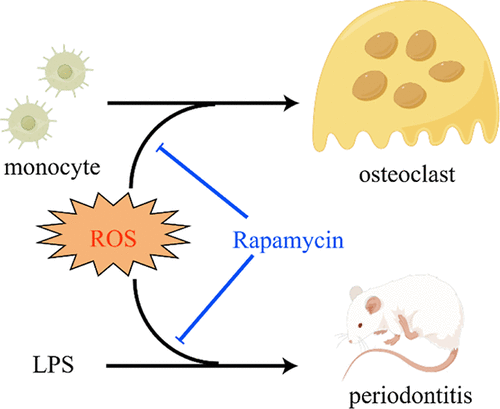A new paper out of China. Not sure how good / reliable it is, but here it is for your review.

Periodontitis is a progressive inflammatory skeletal disease characterized by periodontal tissue destruction, alveolar bone resorption, and tooth loss. Chronic inflammatory response and excessive osteoclastogenesis play essential roles in periodontitis progression. Unfortunately, the pathogenesis that contributes to periodontitis remains unclear. As a specific inhibitor of the mTOR (mammalian/mechanistic target of rapamycin) signaling pathway and the most common autophagy activator, rapamycin plays a vital role in regulating various cellular processes. The present study investigated the effects of rapamycin on osteoclast (OC) formation in vitro and its effects on the rat periodontitis model. The results showed that rapamycin inhibited OC formation in a dose-dependent manner by up-regulating the Nrf2/GCLC signaling pathway, thus suppressing the intracellular redox status, as measured by 2′,7′-dichlorofluorescein diacetate and MitoSOX. In addition, rather than simply increasing the autophagosome formation, rapamycin increased the autophagy flux during OC formation. Importantly, the anti-oxidative effect of rapamycin was regulated by an increase in autophagy flux, which could be attenuated by blocking autophagy with bafilomycin A1. In line with the in vitro results, rapamycin treatment attenuated alveolar bone resorption in rats with lipopolysaccharide-induced periodontitis in a dose-dependent manner, as assessed by micro-computed tomography, hematoxylin–eosin staining, and tartrate-resistant acid phosphatase staining. Besides, high-dose rapamycin treatment could reduce the serum levels of proinflammatory factors and oxidative stress in periodontitis rats. In conclusion, this study expanded our understanding of rapamycin’s role in OC formation and protection from inflammatory bone diseases.
Open access.